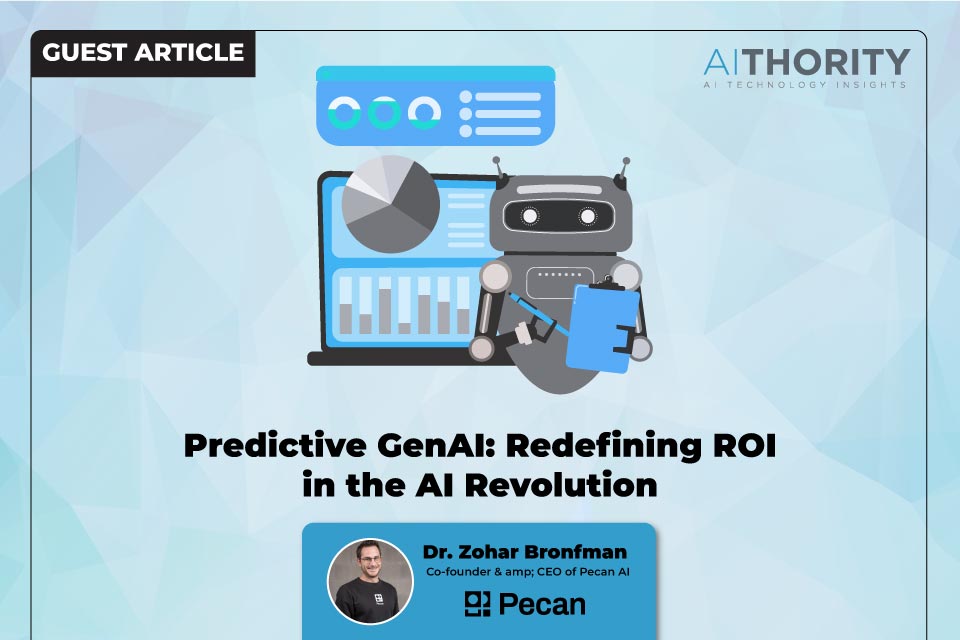The hum of Synthetic Intelligence (AI) servers reverberates throughout industries, promising to redefine productiveness and profitability on an unprecedented scale. Companies of all sizes are racing to undertake AI, pouring billions into infrastructure. Projections recommend over $1 trillion in capital expenditures will gas knowledge facilities, superior chips, and energy grids within the coming years. However amidst the excitement, one important query stays: will AI really ship on its transformative potential, or are companies chasing an elusive dream?
Aligning Metrics to Impression: The Basis of ROI
AI’s potential to revolutionize industries is obvious, but the controversy about its financial viability lingers. Whereas optimistic forecasts recommend AI might automate 25% of labor duties and enhance GDP by 6.1% over the following decade, critics argue that solely a fraction of those duties will show economically viable. This hole highlights a elementary problem: measuring AI’s success.
Additionally Learn: How we constructed GT Protocol’s AI Assistant
To bridge this divide, companies should shift from conventional metrics like mannequin accuracy to those who align AI outcomes with enterprise goals. Metrics comparable to “time-to-value,” buyer retention enhancements, and operational value reductions are pivotal. These measurable impacts foster stakeholder confidence and lay the groundwork for scaling AI initiatives.
Take, for instance, a regional logistics firm. By integrating predictive AI, it diminished supply delays by 20%, straight enhancing buyer satisfaction and useful resource effectivity. These tangible wins underscore how aligning AI initiatives with real-world challenges drives ROI.
Predictive GenAI: The Sport-Changer
2024 marks a turning level for AI adoption, with Predictive Generative AI (GenAI) main the cost. In contrast to conventional GenAI, which creates textual content or photos, Predictive GenAI forecasts developments and optimizes decision-making. Its means to show knowledge into actionable insights is proving invaluable for companies throughout sectors.
Contemplate the healthcare sector, the place predictive fashions anticipate affected person wants, enabling higher useful resource allocation and lowering wait instances. Stanford Medication, for example, makes use of predictive GenAI to refine remedy plans for mind tumors, maximizing precision and bettering outcomes. Equally, in manufacturing, predictive algorithms assist smaller companies schedule machine upkeep proactively, saving time and lowering prices.
Even mid-sized retailers are harnessing Predictive GenAI to forecast stock calls for and personalize buyer experiences—capabilities as soon as reserved for trade giants like Amazon. By democratizing these instruments, Predictive GenAI ensures companies of all sizes can compete on a stage enjoying discipline.
Overcoming Obstacles to Adoption
Whereas the promise of Predictive GenAI is immense, its adoption will not be with out challenges. Information high quality stays a important barrier. Poor knowledge undermines mannequin accuracy and erodes belief amongst stakeholders. Proactive knowledge validation and steady monitoring are important to sustaining integrity.
Infrastructure prices additionally demand cautious consideration. Scalable cloud options enable companies to regulate assets dynamically, avoiding extreme bills whereas sustaining strong mannequin efficiency. Moreover, fostering belief in AI programs is essential. Clear algorithms and moral practices might help companies—significantly SMEs—overcome hesitations about adoption.
Additionally Learn: AI helps Information Engineers be Distinguished Information Engineers
Constructing Resilience By means of Incremental Wins
A profitable strategy to Predictive GenAI adoption begins with small pilot initiatives. These initiatives exhibit fast wins, constructing stakeholder confidence and paving the best way for broader implementation. For instance, a regional meals distributor leveraged predictive analytics to forecast demand surges throughout vacation seasons, lowering waste and boosting profitability. Such incremental successes spotlight how companies can scale AI responsibly and sustainably.
The Way forward for AI: From Predictions to Earnings
As we glance to 2025 and past, the narrative round AI is evolving. Now not is the query “if” companies ought to undertake AI however “how successfully” they’ll leverage it. Predictive GenAI, with its means to ship actionable insights, represents a seismic shift in how organizations strategy decision-making and ROI.
The period of AI as a mere analytical device is over; it’s now a strategic crucial. Corporations that embrace this transformation will discover themselves not simply surviving however thriving in a data-driven world.
[To share your insights with us as part of editorial or sponsored content, please write to psen@itechseries.com]

